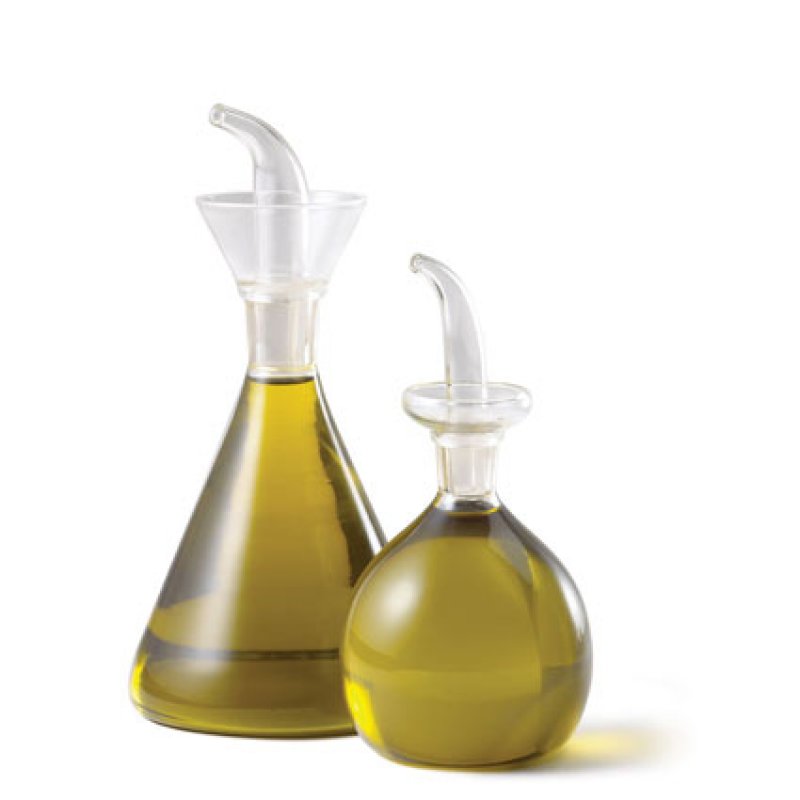Looking at the olive oil
Empty a little olive oil into a champagne flute and look at the color by holding the glass up to the light. This may vary greatly, from dark green to pale green to an almost transparent golden shade of green.
Is color an indication of quality?
No, not always. However, as a rule, the greener the oil the stronger the aroma and the richer the taste. This is due to the fact that the olives were picked at exactly the right moment, not too ripe and not too black. But a rich green color can also be obtained by placing a few leaves from the olive tree into the mix when the olives are being pressed; the color is improved in this manner but not the taste, which becomes bitter.
Using your sense of smell
The aroma of the oil has to do with the state of the oil. Cradle the glass, a brandy glass is best in this case, in your palm and swing the oil to and fro a couple of times; then take in the smell in a deep breath and then analyze it: does it smell fresh, is the smell strong, how can you define it?
Tasting olive oil
This is the most important step. Take a mouthful of the oil but don’t swallow it. As in wine tasting, have the liquid circulate in your mouth, over and under your tongue and finally let it slide down your throat, letting the air out through your teeth. Try to evaluate the acidity; is the taste bitter, sweet, sharp? The tongue tastes the bitterness, the inside of the cheeks taste the sharpness and the tip of the tongue the sweetness.
Do all kinds of olive oil taste the same?
There is a wide range in the taste of olive oil and it is precisely these natural flavors that make olive oil so unique among other edible oils. Connoisseurs generally classify olive oil as mild (delicate, light or buttery), semi-fruity (with a stronger taste of olives), and fruity (with a full-blown olive fragrance).
How to Taste Olive Oil
Scroll down to discover how to taste and assess olive oil in your very own home...
Category:



































































